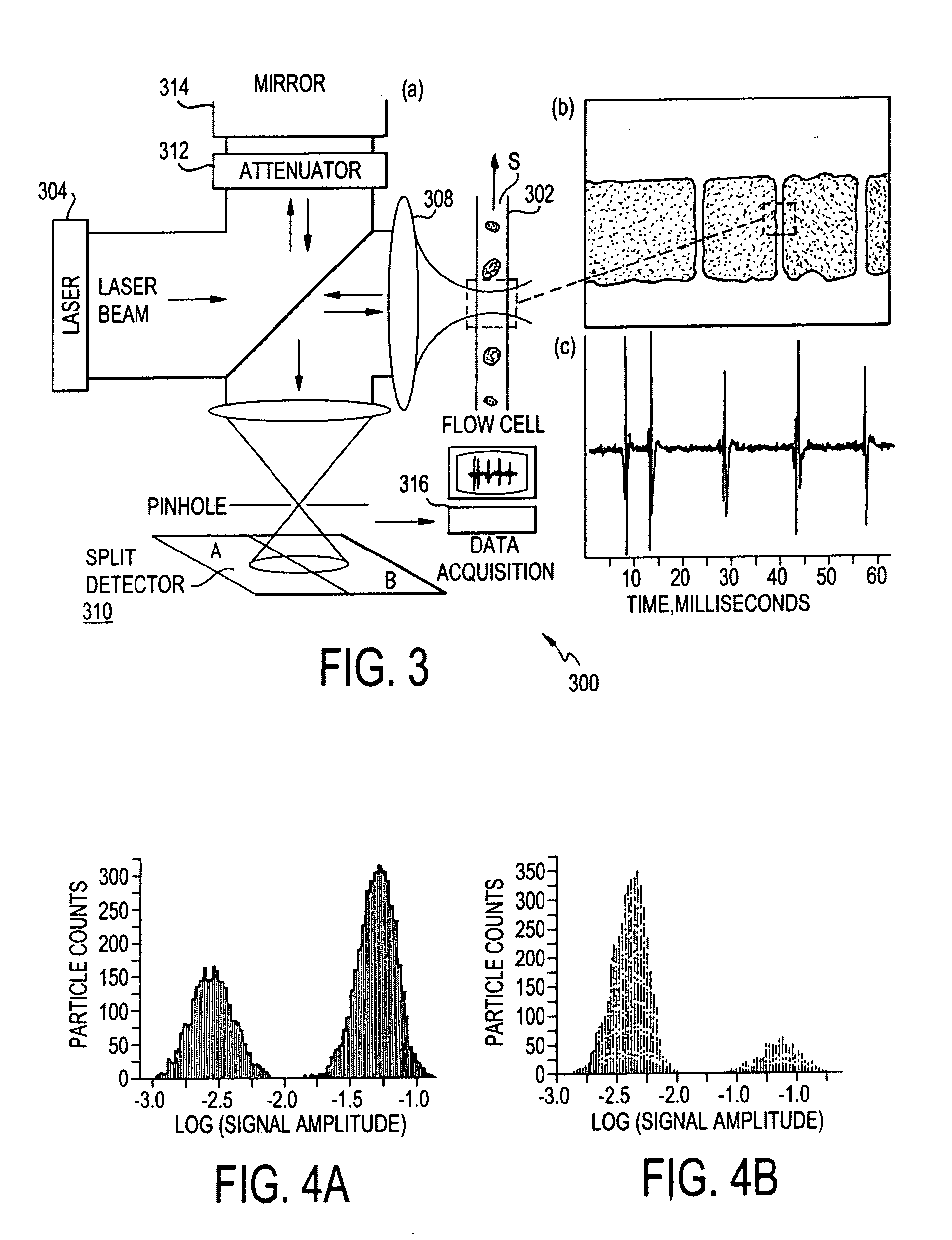Common-path interferometer rendering amplitude and phase of scattered light
- Summary
- Abstract
- Description
- Claims
- Application Information
AI Technical Summary
Benefits of technology
Problems solved by technology
Method used
Image
Examples
Embodiment Construction
[0043]A preferred embodiment will be set forth in detail with reference to the drawings, in which like reference numerals refer to like elements or steps throughout.
[0044]Based on the discussion above, to increase the detection sensitivity for nanoscale particles one needs to determine a signal that exhibits a particle size dependence that scales weaker than R6. In our previous work we have laid out two strategies: 1) gradient force detection and 2) interferomeric detection. Both approaches reduce the signal dependence from |α|2to |α|, thereby making the signal dependent on R3. The gradient force based method monitors the influence of the field gradient ∇E2of a strongly focused laser beam on the trajectory of a target particle, whereas the interferometric approach measures the field Escattof the particle's scattered field as opposed to its intensity. The weaker particle size dependence has been verified in both schemes.
[0045]FIGS. 2A and 2B show the measured interferometric particle...
PUM
 Login to View More
Login to View More Abstract
Description
Claims
Application Information
 Login to View More
Login to View More - R&D
- Intellectual Property
- Life Sciences
- Materials
- Tech Scout
- Unparalleled Data Quality
- Higher Quality Content
- 60% Fewer Hallucinations
Browse by: Latest US Patents, China's latest patents, Technical Efficacy Thesaurus, Application Domain, Technology Topic, Popular Technical Reports.
© 2025 PatSnap. All rights reserved.Legal|Privacy policy|Modern Slavery Act Transparency Statement|Sitemap|About US| Contact US: help@patsnap.com



